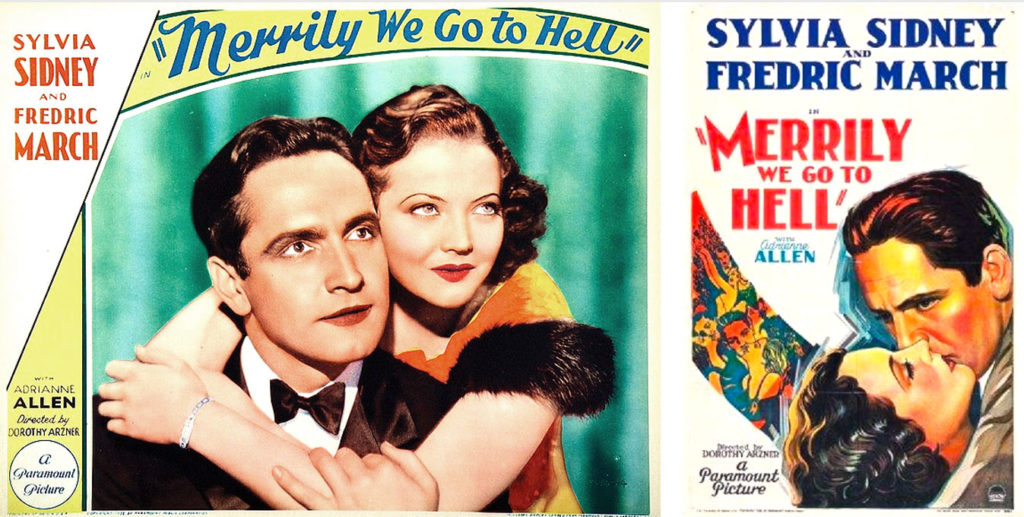I’m very interested in how music was and wasn’t used in sound films made 1929-36. The TCM Classic Film Festival’s screening of Merrily We Go To Hell that I attended provided a fascinating example of a sort of scoring that was done in the early ’30s without the use of a composer.
There is an unusual phenomenon in film scoring that happened once sound came in, in that dedicated underscoring almost completely disappears from movies. There are exceptions, of course, like Max Steiner’s work at RKO, but on the whole most films from this time period have no music at all, or include music as — get that dictionary ready — diegetic sound.

Dracula (1931) has no music at all, except for a bit of Swan Lake during the opening titles. And Mad Love (1936), also shown at the TCMFF, only has one brief moment of underscore. I’ve had a bit of success doing live theatre organ underscore for Dracula, which you can hear about on my podcast here or can experience this coming October at the Cinema Arts Centre.
There is an excellent book on the subject called After the Silents, by Michael Slowik. Slowik researched through documentation he could on the use of underscore from the time, and watched and studied the musical soundscapes of 250 or so films from this time period. I highly recommend the book. It will answer a lot of questions I had about why music was and wasn’t used in, and how it was used when it was.
Merrily We Go To Hell is an interesting hybrid, in that there is enough music in the film to make it feel like it did have a score. All the music, however, is music heard over a radio or which we understand to be performed off-camera in a nightclub or in a church.
The film’s opening title music is a medley of “How Dry I Am”, “Coming Through the Rye”, and one other tune I didn’t pick up on but which I assume also has a title related to alcohol consumption. There is quite a bit of music heard over the radio but which does not function as underscore. But there are also uses of radio or nightclub music that do serve to hint something dramatically to us.
Frederick March’s character drinks quite a lot throughout the film, right from the start actually. It’s the central point of the film’s plot. There is a point in his relationship with Silvia Sydney’s character when his partying and drinking really goes into overdrive, and the music we hear is more bluesy and jazz/swing than the other music we’ve heard. We hear it first when March and some other pals go to a Harlem nightclub. We hear music of the same genre again in a scene following of a drunken party in an apartment, the music now heard over a radio or phonograph.
One other unusual use I noticed, and this was something only organists (like me) would notice or would have picked up on in 1932, is during the scene in which March and Sydney are married. During the processional, we hear a church pipe organ playing “The Wedding March”, and at nearly full volume.
During their taking the marriage vows, however, we hear the song “I Love You Truly”. What’s interesting to me about this usage is that it’s played on a theatre organ. I noticed the organ registration includes a couple Tibia ranks, and it’s played softly, mixed under the dialog. Even if you don’t recognize the tune, the use of it and the way it’s performed and mixed makes it work like underscore.
